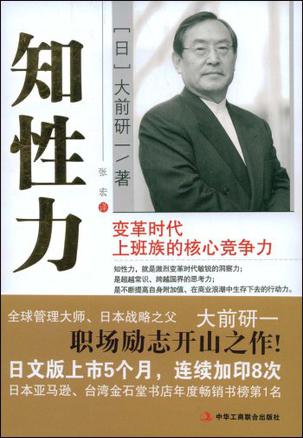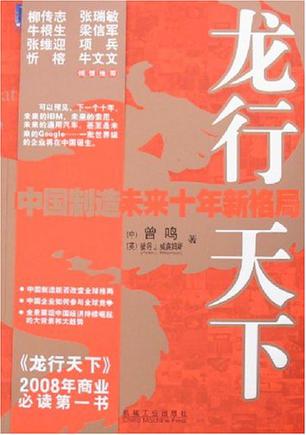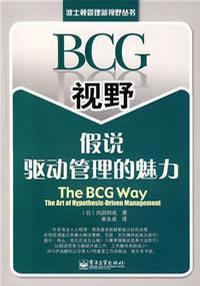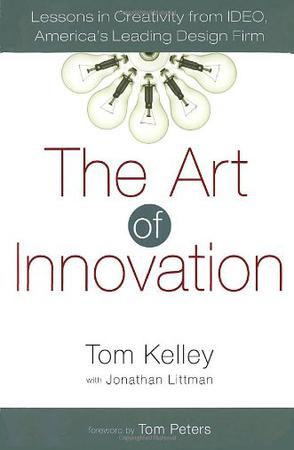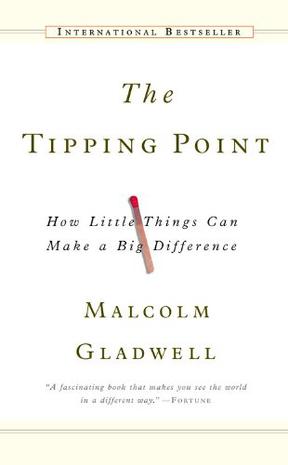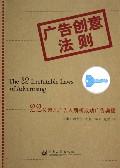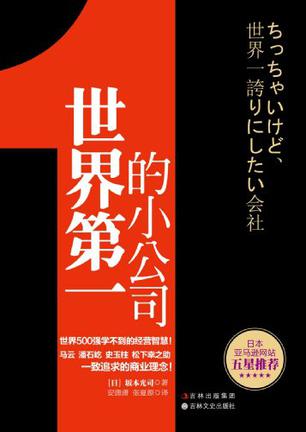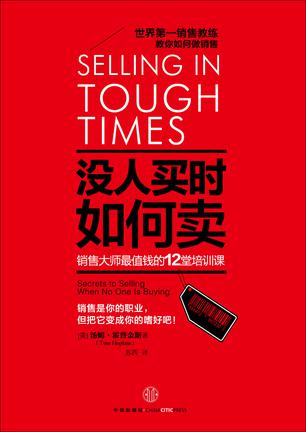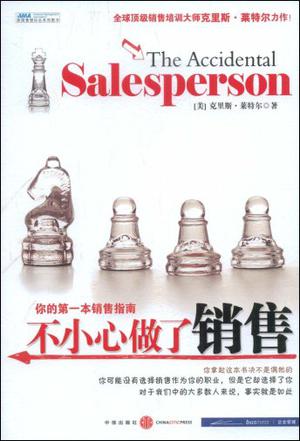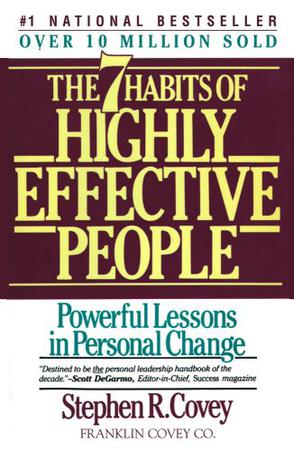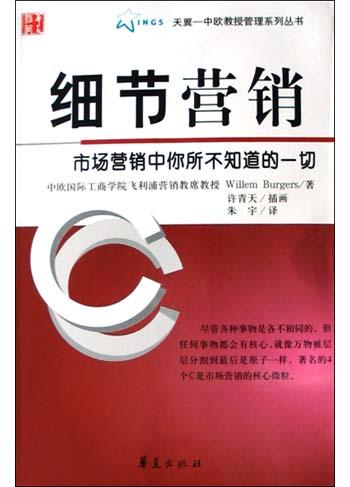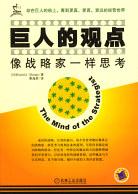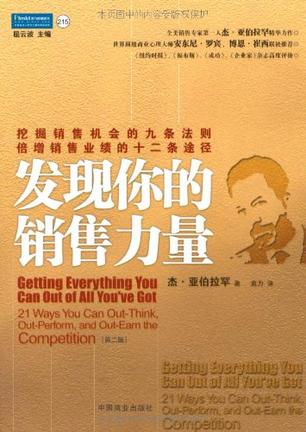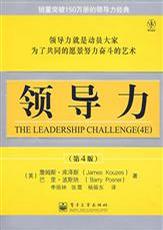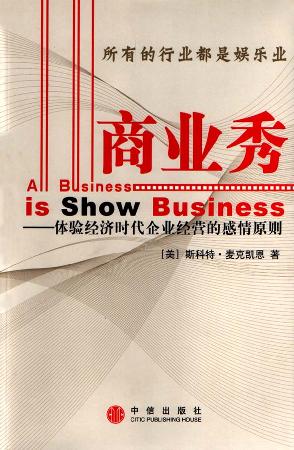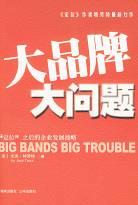欢迎来到相识电子书!
标签:商业
-
知性力
金融风暴来临,制造业陷入困顿,经济面临转型……当熟悉的环境面临巨变,当竞争压力突然加大,当未来变得很不确定,上班族该如何应对?本书告诉你:发掘知性力,提升附加值,是你走出迷雾的应对之道。 知性力是外来的一种超能力吗?不,知性力是我们每个人自身的天然禀赋,它就潜藏于我们的内心深处。我们需要做的就是用积极的态度和正确的方法来揭开这种能力。在本书中,大前研一先生将把这种方法传授给你,帮助你获得更加美好的人生。 -
龙行天下
《龙行天下:中国制造未来十年新格局》试图从宏观和微观各个层面描绘出中国制造未来十年的可能性(从中国制造升级为中国创造),并指出中国的先行者们已经探索出的实现这种可能性的路径。如果没有意外,下一个十年,一批世界级的企业将在中国诞生。短短十余年,中国已彻底告别短缺经济,从一个封闭的农业国成为“世界的工厂”中国产品潮水般涌向全球,中国制造已成为令人生畏的力量。 中国企业的发展主要体现在大多数产业的制造环节的大规模而全面的突破。中国企业不仅在跨国公司主动转移的产业链上证明了自身的能力,也进入了跨国公司并未放弃的领域。 -
BCG视野假说驱动管理的魅力
在面对问题的时候,商业人士一般是先搜集、分析信息再做决策。这样做的结果往往是花费了大量的时间,却拿不出解决策略。其实,舍弃信息比搜集信息更重要,因此,正确的做法是先构建假说,在向前推进工作的同时,对假说加以验证,然后探索解决策略。 从本质上说,未来是不确定的,无论多大规模的企业,都需要应对未来的一切变化。因此,对任何企业的管理者来说,掌握假说思考方法都是至关重要的。 目录 绪论 什么是假说思考 第1章 首先要有假说 1 为什么需要假说思考 2 假说思考——为领导者的预见力和决断力提供支持 3 舍弃信息比搜集信息更重要 4 假说思考——使人开始能够描绘整体框架 第2章 运用假说 1 带着假说发现并解决问题 2 重复假说、验证流程 3 看清问题的整体框架 4 使人行动起来所必备的大局观 第3章 构建假说 1 咨询顾问想出假说的瞬间 2 根据分析结果构建假说 3 根据访谈构建假说 4 用于构建假说的访谈技巧 5 构建假说的大脑使用法 6 好的假说的条件——好的假说与坏的假说的差异 7 假说的结构化 第4章 验证假说 1 试验主导型验证 2 讨论主导型验证 3 分析主导型验证 第5章 提高假说思考力 1 好的假说源自直觉,直觉源自经验 2 在日常生活中不断训练 3 在实际工作中进行训练 4 不要害怕失败——提高心智韧性 本书总结 后记 -
The Art of Innovation
在线阅读本书 Book Description IDEO, the widely admired, award-winning design and development firm that brought the world the Apple mouse, Polaroid's I-Zone instant camera, the Palm V, and hundreds of other cutting-edge products and services, reveals its secrets for fostering a culture and process of continuous innovation. There isn't a business in America that doesn't want to be more creative in its thinking, products, and processes. At many companies, being first with a concept and first to market are critical just to survive. In The Art of Innovation, Tom Kelley, general manager of the Silicon Valley based design firm IDEO, takes readers behind the scenes of this wildly imaginative and energized company to reveal the strategies and secrets it uses to turn out hit after hit. IDEO doesn't buy into the myth of the lone genius working away in isolation, waiting for great ideas to strike. Kelley believes everyone can be creative, and the goal at his firm is to tap into that wellspring of creativity in order to make innovation a way of life. How does it do that? IDEO fosters an atmosphere conducive to freely expressing ideas, breaking the rules, and freeing people to design their own work environments. IDEO's focus on teamwork generates countless breakthroughs, fueled by the constant give-and-take among people ready to share ideas and reap the benefits of the group process. IDEO has created an intense, quick-turnaround, brainstorm-and-build process dubbed "the Deep Dive." In entertaining anecdotes, Kelley illustrates some of his firm's own successes (and joyful failures), as well as pioneering efforts at other leading companies. The book reveals how teams research and immerse themselves in every possible aspect of a new product or service, examining it from the perspective of clients, consumers, and other critical audiences. Kelley takes the reader through the IDEO problem-solving method: > Carefully observing the behavior or "anthropology" of the people who will be using a product or service > Brainstorming with high-energy sessions focused on tangible results > Quickly prototyping ideas and designs at every step of the way > Cross-pollinating to find solutions from other fields > Taking risks, and failing your way to success > Building a "Greenhouse" for innovation IDEO has won more awards in the last ten years than any other firm of its kind, and a full half-hour Nightline presentation of its creative process received one of the show's highest ratings. The Art of Innovation will provide business leaders with the insights and tools they need to make their companies the leading-edge, top-rated stars of their industries. Amazon.com IDEO, the world's leading design firm, is the brain trust that's behind some of the more brilliant innovations of the past 20 years--from the Apple mouse, the Polaroid i-Zone instant camera, and the Palm V to the "fat" toothbrush for kids and a self-sealing water bottle for dirt bikers. Not surprisingly, companies all over the world have long wondered what they could learn from IDEO, to come up with better ideas for their own products, services, and operations. In this terrific book from IDEO general manager Tom Kelley (brother of founder David Kelley), IDEO finally delivers--but thankfully not in the step-by-step, flow-chart-filled "process speak" of most how-you-can-do-what-we-do business books. Sure, there are some good bulleted lists to be found here--such as the secrets of successful brainstorming, the qualities of "hot teams," and, toward the end, 10 key ingredients for "How to Create Great Products and Services," including "One Click Is Better Than Two" (the simpler, the better) and "Goof Proof" (no bugs). But The Art of Innovation really teaches indirectly (not to mention enlightens and entertains) by telling great stories--mainly, of how the best ideas for creating or improving products or processes come not from laboriously organized focus groups, but from keen observations of how regular people work and play on a daily basis. On nearly every page, we learn the backstories of some now-well-established consumer goods, from recent inventions like the Palm Pilot and the in-car beverage holder to things we nearly take for granted--like Ivory soap (created when a P&G worker went to lunch without turning off his soap mixer, and returned to discover his batch overwhipped into 99.44 percent buoyancy) and Kleenex, which transcended its original purpose as a cosmetics remover when people started using the soft paper to wipe and blow their noses. Best of all, Kelley opens wide the doors to IDEO's vibrant, sometimes wacky office environment, and takes us on a vivid tour of how staffers tackle a design challenge: they start not with their ideas of what a new product should offer, but with the existing gaps of need, convenience, and pleasure with which people live on a daily basis, and that IDEO should fill. (Hence, a one-piece children's fishing rod that spares fathers the embarrassment of not knowing how to teach their kids to fish, or Crest toothpaste tubes that don't "gunk up" at the mouth.) Granted, some of their ideas--like the crucial process of "prototyping," or incorporating dummy drafts of the actual product into the planning, to work out bugs as you go--lend themselves more easily to the making of actual things than to the more common organizational challenge of streamlining services or operations. But, if this big book of bright ideas doesn't get you thinking of how to build a better mousetrap for everything from your whole business process to your personal filing system, you probably deserve to be stuck with the mousetrap you already have. --Timothy Murphy From Publishers Weekly "Routine is the enemy of innovation," declares Kelley, general manager of IDEO, in this lively and practical guide to nurturing that elusive quality in all organizations. Dubbed "Innovation U." by Fortune and lauded as "the world's most celebrated design firm" by Fast Company, IDEO, through its work on over 3,000 new product programs, has developed a system for staying on the creative cutting edge while keeping clients happy. Kelley handily parses the components of this system--understanding the market, observing real-life users, brainstorming new concepts and developing and refining prototypes on a tight schedule to come up with a commercial product--with examples from the development of such pathbreaking products as the original Apple mouse and the Palm Pilot V. Kelley vividly conveys how "hot teams," assembled for specific projects with concrete goals and deadlines, are the foundation of IDEO's performance-based reputation. While he recognizes that not every organization is a hip design firm, Kelley believes that all organizations can gain an edge by innovating; among the successes he cites are Amazon, Igloo, Shoebox Greetings and Sephora. IDEO has learned and profited from maxims like "Fail often to succeed sooner." Many who previously feared change may answer his unpretentious call to "Start by following your customer journey, breaking it down into component elements, and asking yourself how you can deliver a better experience." Illustrations. (Feb.)Forecast: Featured in a half-hour segment of Nightline last year that ranked among the most popular aired on the show, IDEO's culture of innovation has received broad exposure. This well-written, well-organized and energizing guide will be a magnet for more attention, and could have a shot at business bestseller lists. Book Dimension length: (cm)24.3 width:(cm)16.1 -
The Tipping Point
Book Description This celebrated New York Times bestsellernow poised to reach an even wider audience in paperbackis a book that is changing the way North Americans think about selling products and disseminating ideas. Gladwells new afterword to this edition describes how readers can constructively apply the tipping point principle in their own lives and work. Widely hailed as an important work that offers not only a road map to business success but also a profoundly encouraging approach to solving social problems. Amazon.com "The best way to understand the dramatic transformation of unknown books into bestsellers, or the rise of teenage smoking, or the phenomena of word of mouth or any number of the other mysterious changes that mark everyday life," writes Malcolm Gladwell, "is to think of them as epidemics. Ideas and products and messages and behaviors spread just like viruses do." Although anyone familiar with the theory of memetics will recognize this concept, Gladwell's The Tipping Point has quite a few interesting twists on the subject. For example, Paul Revere was able to galvanize the forces of resistance so effectively in part because he was what Gladwell calls a "Connector": he knew just about everybody, particularly the revolutionary leaders in each of the towns that he rode through. But Revere "wasn't just the man with the biggest Rolodex in colonial Boston," he was also a "Maven" who gathered extensive information about the British. He knew what was going on and he knew exactly whom to tell. The phenomenon continues to this day--think of how often you've received information in an e-mail message that had been forwarded at least half a dozen times before reaching you. Gladwell develops these and other concepts (such as the "stickiness" of ideas or the effect of population size on information dispersal) through simple, clear explanations and entertainingly illustrative anecdotes, such as comparing the pedagogical methods of Sesame Street and Blue's Clues, or explaining why it would be even easier to play Six Degrees of Kevin Bacon with the actor Rod Steiger. Although some readers may find the transitional passages between chapters hold their hands a little too tightly, and Gladwell's closing invocation of the possibilities of social engineering sketchy, even chilling, The Tipping Point is one of the most effective books on science for a general audience in ages. It seems inevitable that "tipping point," like "future shock" or "chaos theory," will soon become one of those ideas that everybody knows--or at least knows by name. --Ron Hogan From Publishers Weekly The premise of this facile piece of pop sociology has built-in appeal: little changes can have big effects; when small numbers of people start behaving differently, that behavior can ripple outward until a critical mass or "tipping point" is reached, changing the world. Gladwell's thesis that ideas, products, messages and behaviors "spread just like viruses do" remains a metaphor as he follows the growth of "word-of-mouth epidemics" triggered with the help of three pivotal types. These are Connectors, sociable personalities who bring people together; Mavens, who like to pass along knowledge; and Salesmen, adept at persuading the unenlightened. (Paul Revere, for example, was a Maven and a Connector). Gladwell's applications of his "tipping point" concept to current phenomena--such as the drop in violent crime in New York, the rebirth of Hush Puppies suede shoes as a suburban mall favorite, teenage suicide patterns and the efficiency of small work units--may arouse controversy. For example, many parents may be alarmed at his advice on drugs: since teenagers' experimentation with drugs, including cocaine, seldom leads to hardcore use, he contends, "We have to stop fighting this kind of experimentation. We have to accept it and even embrace it." While it offers a smorgasbord of intriguing snippets summarizing research on topics such as conversational patterns, infants' crib talk, judging other people's character, cheating habits in schoolchildren, memory sharing among families or couples, and the dehumanizing effects of prisons, this volume betrays its roots as a series of articles for the New Yorker, where Gladwell is a staff writer: his trendy material feels bloated and insubstantial in book form. Agent, Tina Bennett of Janklow & Nesbit. Major ad/promo. (Mar.) From Library Journal This genial book by New Yorker contributor Gladwell considers the elements needed to make a particular idea take hold. The "tipping point" (not a new phrase) occurs when something that began small (e.g., a few funky kids in New York's East Village wearing Hush Puppies) turns into something very large indeed (millions of Hush Puppies are sold). It depends on three rules: the Law of the Few, the Stickiness Factor, and the Power of Context. Episodes subjected to this paradigm here include Paul Revere's ride, the creation of the children's TV program Sesame Street, and the influence of subway shooter Bernie Goetz. The book has something of a pieced-together feel (reflecting, perhaps, the author's experience writing shorter pieces) and is definitely not the stuff of deep sociological thought. It is, however, an entertaining read that promises to be well publicized. Recommended for public libraries. -Ellen Gilbert, Rutgers Univ. Lib., New Brunswick, NJ From Booklist Gladwell, a New Yorker staff writer, offers an incisive and piquant theory of social dynamics that is bound to provoke a paradigm shift in our understanding of mass behavioral change. Defining such dramatic turnarounds as the abrupt drop in crime on New York's subways, or the unexpected popularity of a novel, as epidemics, Gladwell searches for catalysts that precipitate the "tipping point," or critical mass, that generates those events. What he finds, after analyzing a number of fascinating psychological studies, is that tipping points are attributable to minor alterations in the environment, such as the eradication of graffiti, and the actions of a surprisingly small number of people, who fit the profiles of personality types that he terms connectors, mavens, and salesmen. As he applies his strikingly counterintuitive hypotheses to everything from the "stickiness," or popularity, of certain children's television shows to the spread of sexually transmitted diseases, Gladwell reveals that our cherished belief in the autonomy of the self is based in great part on wishful thinking. Donna Seaman From AudioFile Why is it that fashion trends change the way we dress? Why do various TV shows, movies, and books become so popular? Malcolm Gladwell provides a diagram of our society, along with an analysis of the strategies people apply to influence and mold its direction. Gladwell describes the personality types that create trends and those that influence others by "spreading the word." History takes on a whole new perspective as he describes events of early America that specifically follow his theories of "selling the public on an idea" and "social epidemics." Feedback from market mavericks further substantiates Gladwell's viewpoints. B.J.P. Book Dimension length: (cm)17.2 width:(cm)10.8 点击链接进入中文版: 引爆点 -
Pour Your Heart Into It
The chairman and CEO of Starbucks relates how he and his team built a small Seattle company into a nationwide business phenomenon. From Amazon.com Since 1987, Starbucks's star has been on the rise, growing from 11 Seattle, WA-based stores to more than 1,000 worldwide. Its goals grew, too, from the more modest, albeit fundamental one of offering high-quality coffee beans roasted to perfection to, more recently, opening a new store somewhere every day. An exemplary success story, Starbucks is identified with innovative marketing strategies, employee-ownership programs, and a product that's become a subculture. Whether you're an entrepreneur, a manager, a marketer, or a curious Starbucks loyalist, Pour Your Heart into It will let you in on the revolutionary Starbucks venture. CEO Howard Schultz recounts the company's rise in 24 chapters, each of which illustrates such core values as "Winning at the expense of employees is not victory at all." --This text refers to an out of print or unavailable edition of this title. From Library Journal The author is the entrepreneur behind Starbucks, the coffee-shop chain with a "passion" for quality coffee. Through the voice of Eric Conger, Schultz speaks poetically about the "mystery and romance" of the "coffee experience." Well, to some people coffee is like that. The program is not so much for those who want to learn about business techniques as for those who love Starbucks. Schultz's story is an interesting one, largely a personal narrative about making it big. At one point the narration says, "It's not about me," but to a great extent the tapes really are. Recommended only if Starbucks has a strong presence in your community.?Mark Guyer, Stark Cty. Dist. Lib., Canton, Ohio Book Dimension Height (mm) 229 Width (mm) 152 -
大品牌大问题
在当今高度竞争的市场中,任何一个失误都会令你的企业断送在竞争对手手中。而一旦犯错,你再想翻身的机会可谓微乎其微。更可怕的是,你面临的可能不是来自一两个人的挑战,而是一个带有敌意的群体,他们的目的就是要超越你。就在不久前,李维斯、ST&T、佳洁士、施乐等都是其所在行业的顶尖高手,可几乎一夜之间,大厦倾覆了! 在这本书中,“定位之父”杰克·特劳特分析了超级企业失败的原因,并为它们提供了“解药”。看看书中提到的企业吧——施乐、美乐啤酒、DEC、汉堡王等等,难道还不足以警醒吗? 错误一:跟风——我们或许不是第一个,但是我们会成为更好的一个 错误二:不知所卖何物——不能清晰介绍新产品 错误三:真相终会水落石出——坚信拥有最优质的产品而终将赢得胜利 错误四:别人的概念——借别人的先进概念,给自己定位 错误五:我们很成功——成功,所以可以在市场上为所欲为 错误六:面面俱到——满足消费者的所有需求 错误七:靠数据生存——追求增长率 错误八:不进行自我攻击 错误九:管理高层不负责战略的制定 作为一船之长的每一位CEO,都应该在墙上悬挂这样的警示:谨记泰坦尼克号。熟悉我的读者会在本书中发现不少眼熟的企业案例。这一次我用显微镜细察使他们陷入困境的关键原因,并提出或许能够挽救他们的建议。——杰克 .特劳特 -
世界第一的小公司
《世界第一的小公司》一个只有3.3平米的小店,年销售额竟突破了3亿日元,是什么让这个小店创造了这样的奇迹?一个只有5名员工的小印刷社,究竟有怎样的独门绝技,让自己成为全日本第一名片商?一家小小的街道工厂,其制造的“魔法铅球”靠什么打败了竞争对手,连续三届奥运会都获得金银铜牌?8个做到世界第一的小公司,靠着自己一招鲜的秘技,其经营业绩和公众影响力让规模比它们大十倍、百倍的大公司都望尘莫及! 这些小公司,或者40年如一日,精心制作口味纯正的甜点让全日本的顾客慕名前来,甚至不惜深夜排起长队;或者推行全新的“艺术风格”经营方式,让有着450年历史的小旅馆创下73%的顾客回头率;或者靠着活用外部资源,从濒临倒闭的绝境,一跃成为世界著名的酒屋。每个小公司都有令人耳目一新的绝招儿,每个小公司都取得了堪称奇迹的成就。仔细研读,仔细领会,它们的今天就是你的公司的明天! -
没人买时如何卖
通过《没人买时如何卖》中汤姆霍普金斯的12堂销售课,他会充分帮你得到切实可用的销售启示,发掘出先前被忽略了的销售机会,停止无意义的销售行为,汲取新颖的销售方法,从而成为一个高绩效的销售天才! 事实上,当你听到“市场”这个词后,销售大师汤姆?霍普金斯希望你能理解它其实指的是“人”。销售的主题不仅仅包含产品,它同时还与“人”息息相关。当你在销售时,就是在为“人”做事。您在向人们销售您的产品和服务。因此,与顾客沟通和了解他们的需求、动机,才是销售的真正意义。 所以,商业销售的成败首先取决于作为销售员的你的态度,然后逐渐磨练销售技巧:认识销售的本质,回归销售本源;保持火一样的激情,正面思维问题,积极面对艰难;培养销售素质,调整销售步骤;关心你的客户,了解你的对手…… -
不小心做了销售
《不小心做了销售》里,克里斯·莱特尔将交给你一张迅速改善销售技巧、提高业绩的路线图。这本销售指导手册行文活泼生动,溶幽默、趣闻轶事、高效而成熟的销售策略于一炉。书中有极其实用的对答"台词"、模版、图表、样信、工作表……为你一步步成为出类拔萃的销售明星、实现人生价值提供了一切必要的支持。当初,克里斯·莱特尔本想在广播电台找一个新闻编辑的工作,结果却“意外地”进入了销售部门。对于你来说,是不是有点“同命相连”的味道?你是不是也是不小心进入这个行业的?是不是也在考虑在这个以前没打算做的行业里干出一番事业? 不要再困惑了! -
市场营销管理
本书根据亚洲市场的特点撰写,介绍亚洲金融危机与市场疲软后的营销战略、方法、对策和成功案例。本书是世界公认的专为亚洲人编写的《市场营销管理》大学教材。 《市场营销管理》(亚洲版)出版时,正值亚洲经济高速和持续发展的时期,亚洲以外的国家急于进入亚洲市,迫切需要了解亚洲的经济运行和商业活动。然而,不可预料的亚洲金融风暴在1997年中期发生了,并迅速演变为经济危机。复兴亚洲的关键在于发展顾客导向市场营销。本书第二版的目的在于帮助该地区的营销者捕获新的市场机会,并向他们推荐经济萧务和市场疲软条件下的营销新思路;同时,本版也保留了第一版的基本特征。 本书新增的内容如下: ·阐述亚洲金融危机和对该地区的营销造成的影响。 ·增加介绍亚洲的广告插图和传播材料,以使读者加深印象。 ·增加新的营销案例,特别是来自中国、中国香港和印度的案例。 ·提供更多的不同国家之间跨文化的营销分析专论。 ·对亚洲消费者及其在市场上的功能与行为及经验数据作了更新。 ·扩大了亚洲营销问题的讨论范围。 ·新增的第23章介绍了营销者所关注和面临的新信息、传播及销售渠道问题。 ·增加了全新的章末“观念应用”专题,其中有不少是针对亚洲的公司如何应对实际营销挑战的内容。 -
奥卡姆剃刀
能以较少的假定去解释的事,用较多的假定去解释是徒劳的。600多年前英国奥卡姆郡的威廉博士提出的这一思想被人们称之为“奥卡姆剃刀”。 “奥卡姆剃刀”以结果为导向,始终追寻高效简洁的方法。在过去,它影响过哥白尼、牛顿、爱因斯坦等伟大科学家,帮助他们成就了辉煌的科学事业。现在,它又被比尔?盖茨、巴菲特等经济界精英所使用。这是一个改变全球精英命运的思维法则,也是左右企业与个人发展的永恒法则。 爱因斯坦说:“如果你不能改变旧有的思维方式,你也就不能改变自己当前的生活状况。”当你用奥卡姆剃刀改变你的思维时,你的生活将会发生改变。 ☉“奥卡姆剃刀”来自十四世纪著名的威廉博士,它的原意是:如无必要,勿增实体;两个类似的解决方案,选择最简单的。这把剃刀是最尖利的思想武器,它曾使很多人感到威胁。它剔去了几百年间争论不休的经院哲学,引发了文艺复兴和宗教改革,谱写了全世界现代化的第一篇章。 ☉“奥卡姆剃刀”以结果为导向,始终追寻高效简洁的思维方式。在过去,它影响过哥白尼、牛顿、爱因斯坦等伟大科学家,帮助他们成就了辉煌的科学事业。现在,它又被比尔?盖茨、巴菲特等经济界精英所使用。这是一个改变全球精英命运的思维法则,也是左右企业与个人发展的永恒法则。 ☉“简单生活”——奥卡姆剃刀在生活中 ☉人际关系中的奥卡姆剃刀——不能把“数量”转化为“质量”,只能落入“相识满天下,知己能几人”的局面。 ☉企业组织中的奥卡姆剃刀——给你的组织减肥 ☉剃出一条简单成功路——净化纯粹你的思想,精确你的定位,精炼你的人生! -
The 7 Habits of Highly Effective People
In The 7 Habits of Highly Effective People, author Stephen R. Covey presents a holistic, integrated, principle-centered approach for solving personal and professional problems. With penetrating insights and pointed anecdotes, Covey reveals a step-by-step pathway for living with fairness, integrity, service, and human dignity -- principles that give us the security to adapt to change and the wisdom and power to take advantage of the opportunities that change creates. Ingram A revolutionary program to breaking patterns of self-defeating behavior and replacing them with a principle-centered approach to problem-solving. A pathway to wisdom and power. --This text refers to the Audio Cassette edition. Book Info A holistic, integrated approach to solving personal and professional problems by becoming principle-centered. Stephen Covey is chairman of the Covey Leadership Center and the nonprofit Institute for Principle-Centered Leadership. DLC: Success-Psychological aspects. --This text refers to an out of print or unavailable edition of this title. From the Publisher The 7 Habits Of Highly Effective People is a comprehensive program based on developing an awareness of how perceptions and assumptions hinder success---in business as well as presonal relationships. Here's an approach that will help broaden your way of thinking and lead to greater opportunities and effective problem solving. Be Pro-Active: Take the initiative and the responsibility to make things happen. Begin With an End in Mind: Start with a clear destination to understand where you are now, where you're going and what you value most. Put First Things First: Manage yourself. Organize and execute around priorities. Think Win/Win: See life as a cooperative, not a comprehensive arena where success is not achieved at the expense or exclusion of the success of others. Seek First to Understand: Understand then be understood to build the skills of empathetic listening that inspires openness and trust. Synergize: Apply the principles of cooperative creativity and value differences. Renewal: Preserving and enhanving your greatest asset, yourself, by renewing the physical, spiritual, mental and social/emotional dimensions of your nature. Stephen R. Covey is the most respected motivator in the business world today. Learn to use his 7 Habits Of Highly Effective People--and see how they can change your life. -
细节营销
■ 新产品的研发是好的,但新市场的研发则更好。 ■ 失去好客户是坏事,抛弃坏客户则是好事。 ■ 车、烟、酒及衣服的品牌决定你的身份,但洗主衣粉的品牌与你的身份无关。 ■ 市场营销杠杆底线是营销决策要考虑的关键问题,是营销投资决策的试金石。 ■ 降价是最昂贵的市场营销策略。 ■ 利润比市场份额更加重要。 ■ 定价不仅仅是一个简单的数学问题。 ■ 促销不但可以增加销售量,而且还可以增强渠道控制力。 ■ 小事件件做对,大事自然错不了。 ■ 营销无小事,事事需重视。 ■ 市场营销的成败在公司外部,而不是在内部:只有运筹帷幄,才能决胜千里。 ■ 出路无处不在,答案就在你身边,就看你是否有心。 ■ 双赢很好,但到底你赢多少,我赢多少?这是市场营销的核心问题。 ■ 收集有关你的客户一切知识,并充分利用这些知识。 ■ 一个优秀的市场营销经理应是一个冷静务实、重试验的科学家。 ■ 更好的产品并不需要更多的成本,而是需要一些更能吸引客户的功能。 ■ 市场领先的地位并不取决于市场规模,而是取决于市场界定。 -
巨人的观点
这本关于企业家战略思维的畅销书已经成为大家公认的一本经典著作,本书作者是一位国际知名的经营战略家,他对某些公司为什么可以在全球市场的竞争中具有优势的原因提供了令人信服的说明。本书介绍了战略有关的卓越见识,如战略家的思维过程和计划技术,以及公司怎样从关注战略计划的三个必要要素——公司、顾客及和竞争对手——中获得好处。 这本经典著作中列举了许多关于战略的例子,可以帮助各处层次的管理人员提高其富有想像力的战略思维能力。 本书介绍了战略思维的一般过程、实现战略优势的途径,制定成功战略思路及注意事项,以及如何根据实际情况的发展作出相应调整等。本书内容详实,列举了许多具体的案例,具有极大启发意义,同时书中也对常见的错误进行分析,对企业经营管理人员的必备参考书,对企业经营管理人员的战略思维能力,战略计划制定能力的提高有极大的帮助。 -
发现你的销售力量
《发现你的销售力量》将告诉你如何找到这些增加收入及成功的秘密,提供你一些有效的策略和执行方法,替你带来更多的财富、尊敬及成功。一旦你领略其中滋味,一切都将改头换面。事实上,这些策略可以应用在你生活中的各个领域,用以说服他人接受你的想法观念,教你成为一个拥有影响力并赢得尊敬的领导人物,以及如何用光明正大的手段得到你想要的东西。你即将进一步趟神奇的旅行,将去发掘隐而未现的资源和机会。 -
领导力(第3版)
本书讨论的是领导者如何激励他人自愿地在组织中做出卓越的成就;讨论的是领导者如何通过实际行动,把理念化为行动,把愿景化为现实,把障碍化为革新,把分裂化为团结,把风险化为奖赏;讨论的是领导者要创造一种氛围,让人们在此氛围下抓住极富挑战性的机会,取得非凡的成功。 今天的确不乏挑战性的机会。在这个特殊的时代,无论从数量看还是从复杂程度看,挑战似乎越来越多。每一代人都会面临他们自己的问题和情况。挑战多本身并不是一个问题,通过我们的努力,我们有能力改变我们生活和工作的这个世界。通过25年多的研究,我们找到了各种卓越的领导实践,使我们坚信我们能改变这个世界。 本书的基本目的,是帮助人们——经理人和其他人——强化他们领导其他人做出卓越成就的能力。不管你是在私营部门还是公共部门,是个雇员还是个志愿者,是在一线还是在管理层,是学生还是家长,作者写这本书就是要帮助你开发你的领导力,带领其他人达到他们从未到过的境界。 -
商业秀
你的企业到底在生产产品,还是在生产生活方式?你是在销售物质提供服务,还是在销售氛围和提供情感体验?如果企业家的思考这们的问题,并且看到那些真正成功的企业的需要,那么恐怕需要正视:在这个体验经济时代,感情推动商机。 客户不仅是在购买你的产品和服务,同时,他们更希望从中得到乐趣。因此,不管是出售产品还是服务,商业的实质就是做秀。你的企业如同置身于聚光灯照耀下的舞台,而你的员工就是演员,他们在出售产品和服务的时候也在表演。你的观众,也就是你的客户,可能会喜欢这样的表演,也可能会讨厌这样的表演,甚至是忽视这样的表演。 斯科特・麦克凯恩根据现今商业的发展特征,总结出一个真理: 所有的行业都是娱乐业: 他把商业与电影、电视与音乐等娱乐业联系起来,把多年以来一直应用于娱乐业的东西引申到商业世界,那就是:要想成功,你就必须与你的观众建立一种感情上的联系。这样才能创造一种让客户无法拒绝的感情体验,他们购买你的产品和服务的原因是,他们可以一遍接一遍地享受这种感情的体验。 经济学原则笼罩了我们大多数的商业活动:成本、提高市场占有率、增进股东的股票价值,而实际上,娱乐业的感情原则对商业是一种从管理到经营上的全方位清洗,因为商业的文化和行为已经改变,商务策略的关注点也必须转移到感情原则上来。 -
大品牌大问题
在当今高度竞争的市场中,任何一个失误都会令你的企业断送在你的竞争对手手中。而一旦如此,你再想翻身的机会可谓微乎其微。更可怕的是,你面临的可能不是来自一两个人的挑战,而一个带有敌意的群体,他们的目的就是要超越你。就在不久前,利维斯,AT&T,佳洁士,施乐,以及泛世通不都是其所在行业的顶尖高手,可几乎一夜之间,大厦倾覆了。 在这本书中,“定位之王”,杰克·特劳特分析了超级企业失败的原因,并为他们提供了“解约”。看看书中提到的企业吧-施乐,美乐啤酒,DEC,汉堡王等等,难道还不足以警醒吗?
热门标签
下载排行榜
- 1 梦的解析:最佳译本
- 2 李鸿章全传
- 3 淡定的智慧
- 4 心理操控术
- 5 哈佛口才课
- 6 俗世奇人
- 7 日瓦戈医生
- 8 笑死你的逻辑学
- 9 历史老师没教过的历史
- 10 1分钟和陌生人成为朋友

